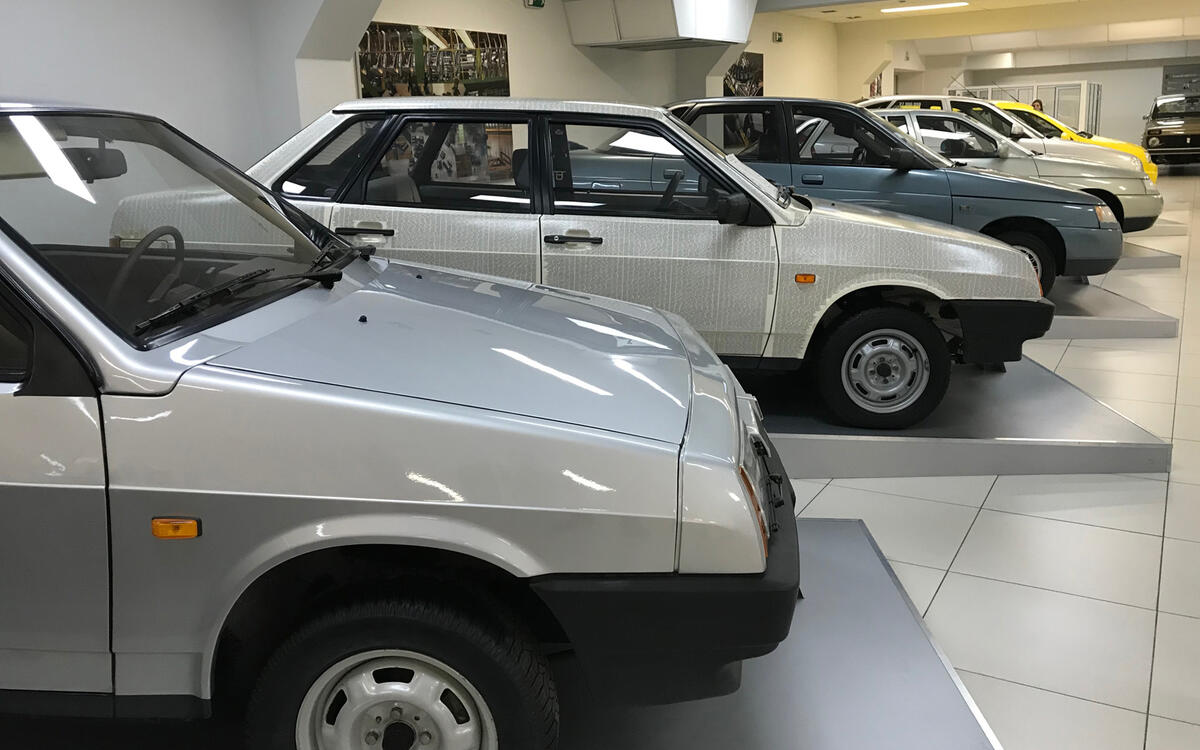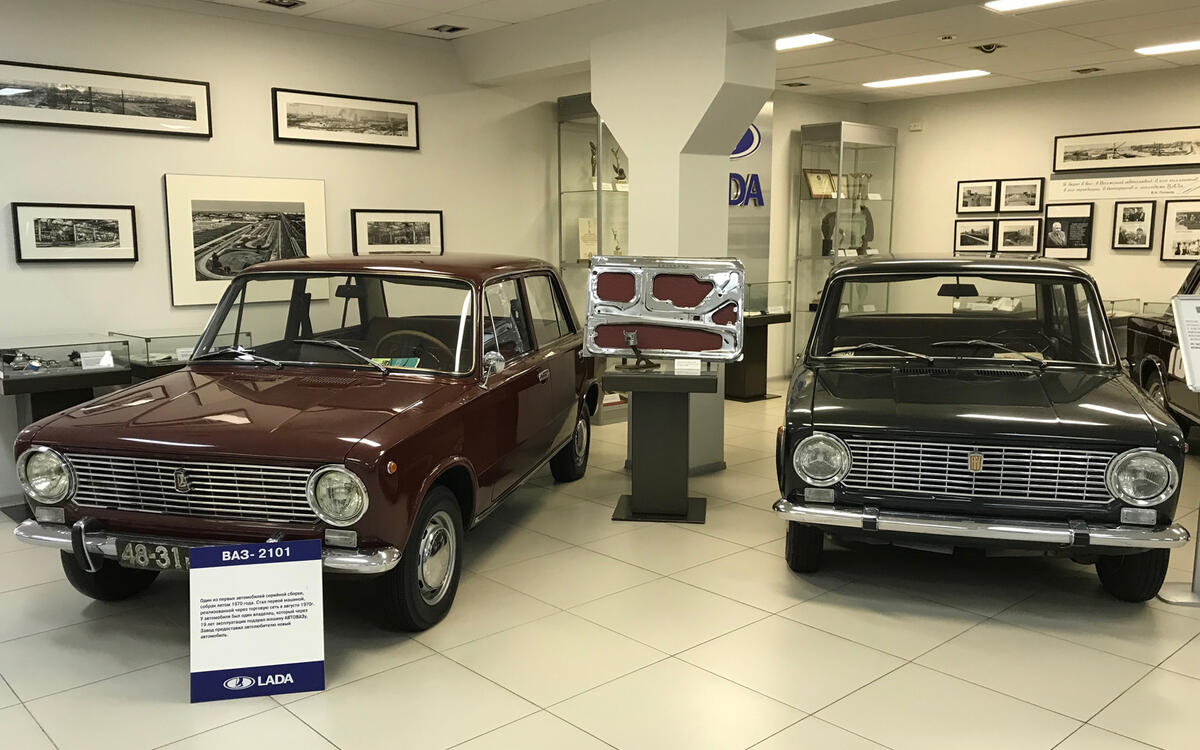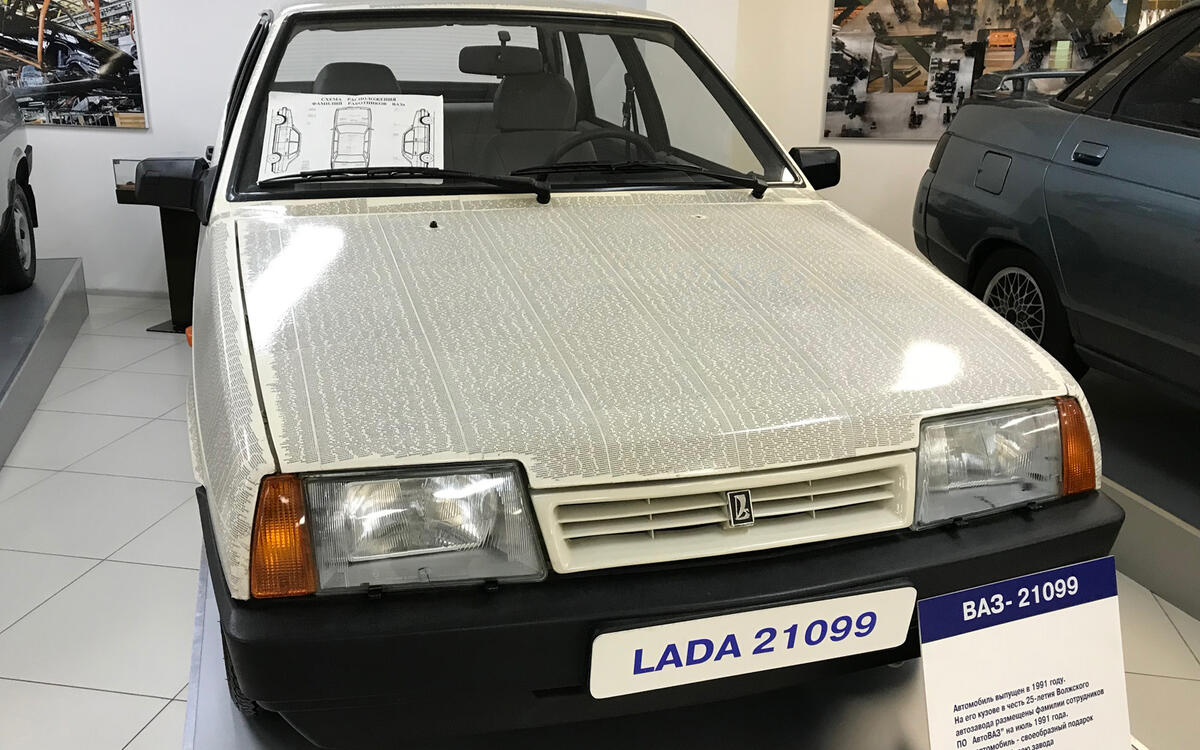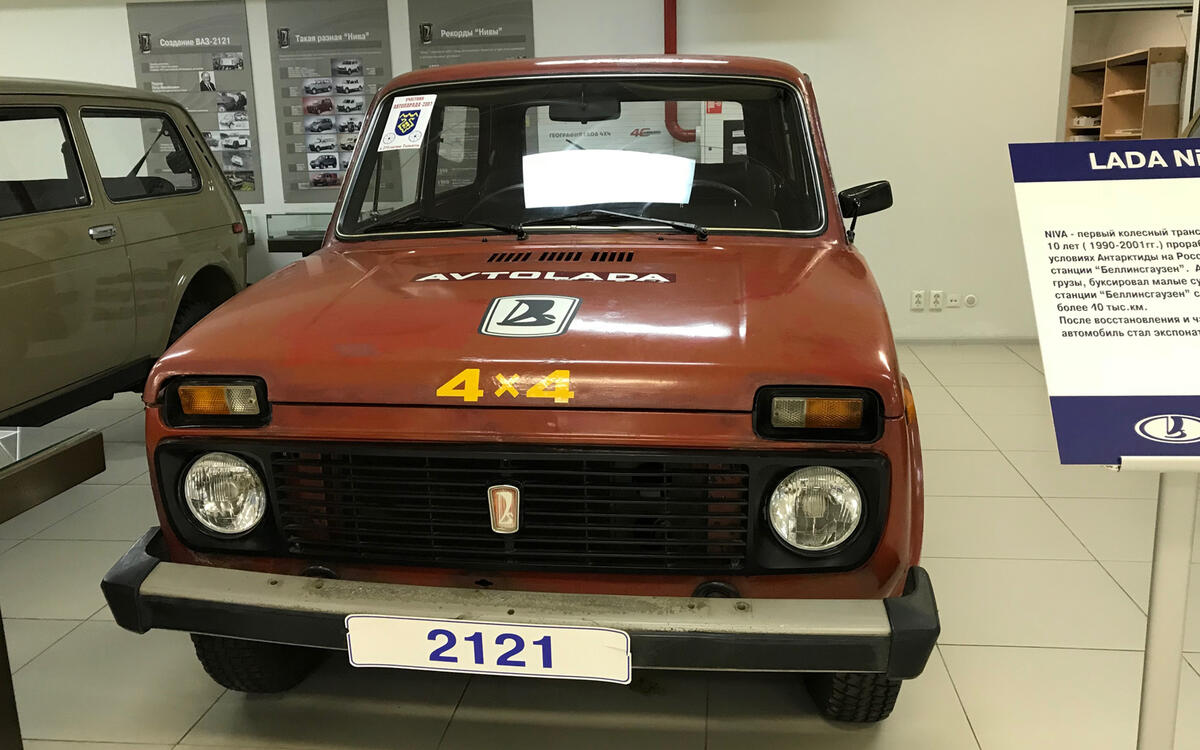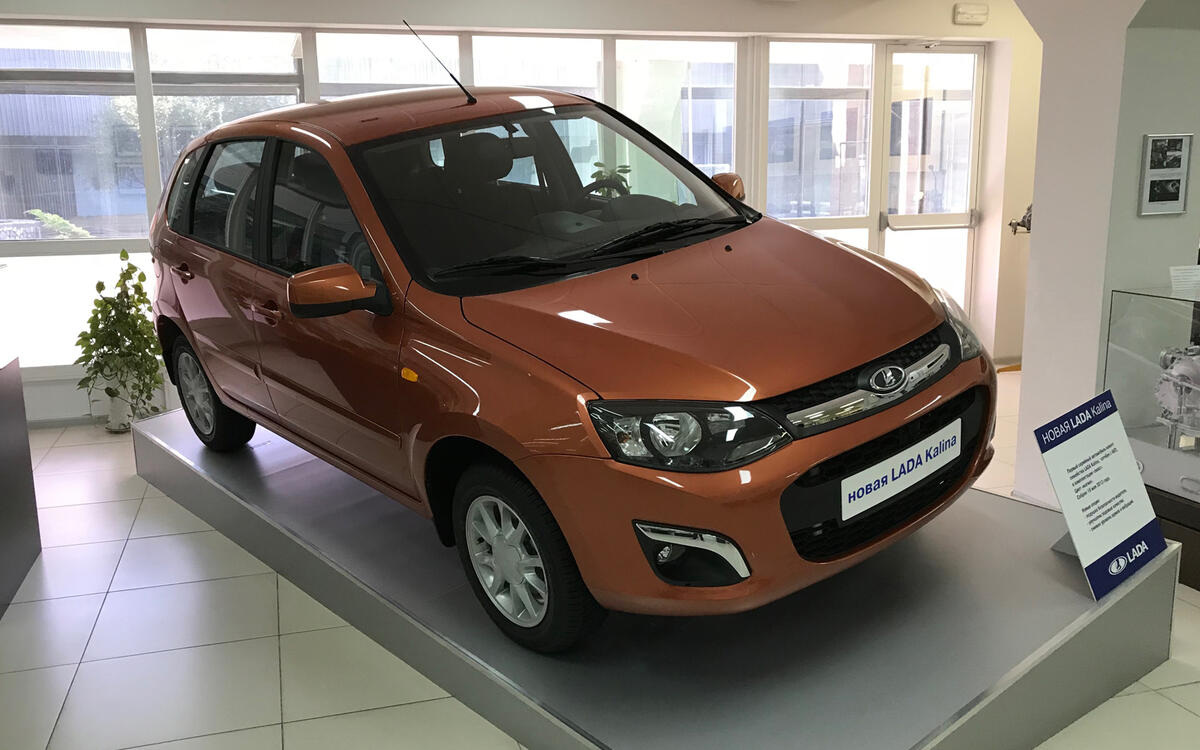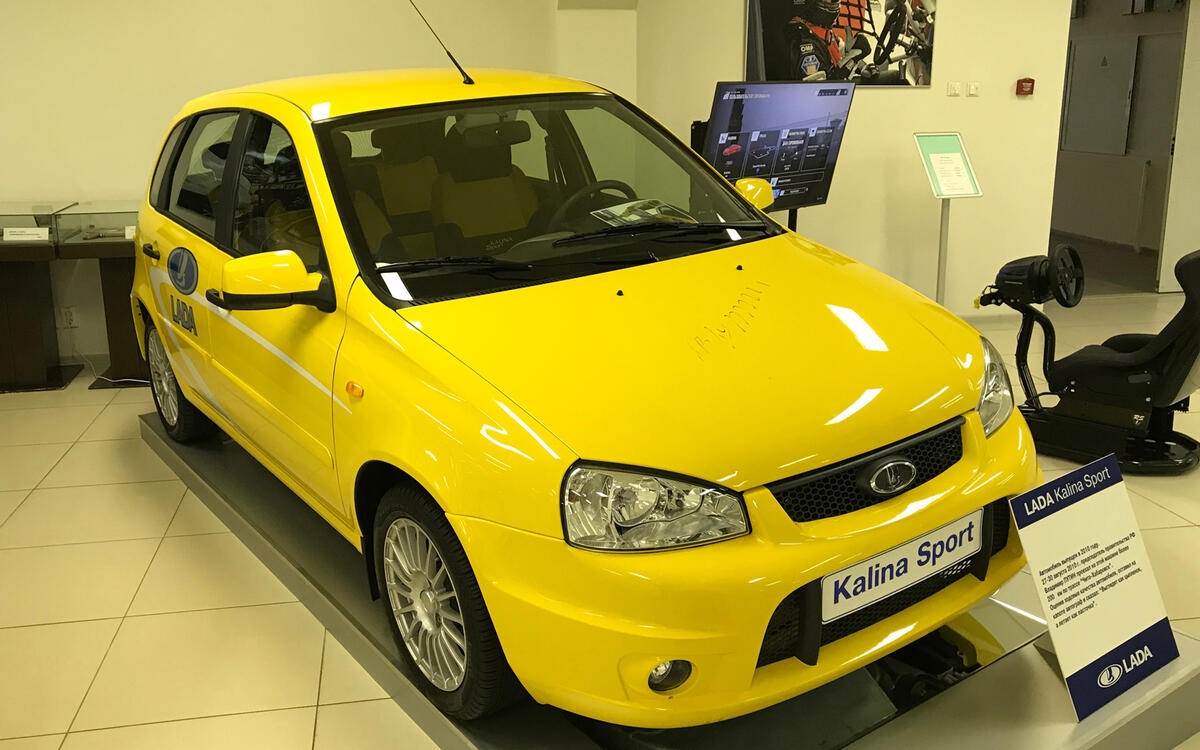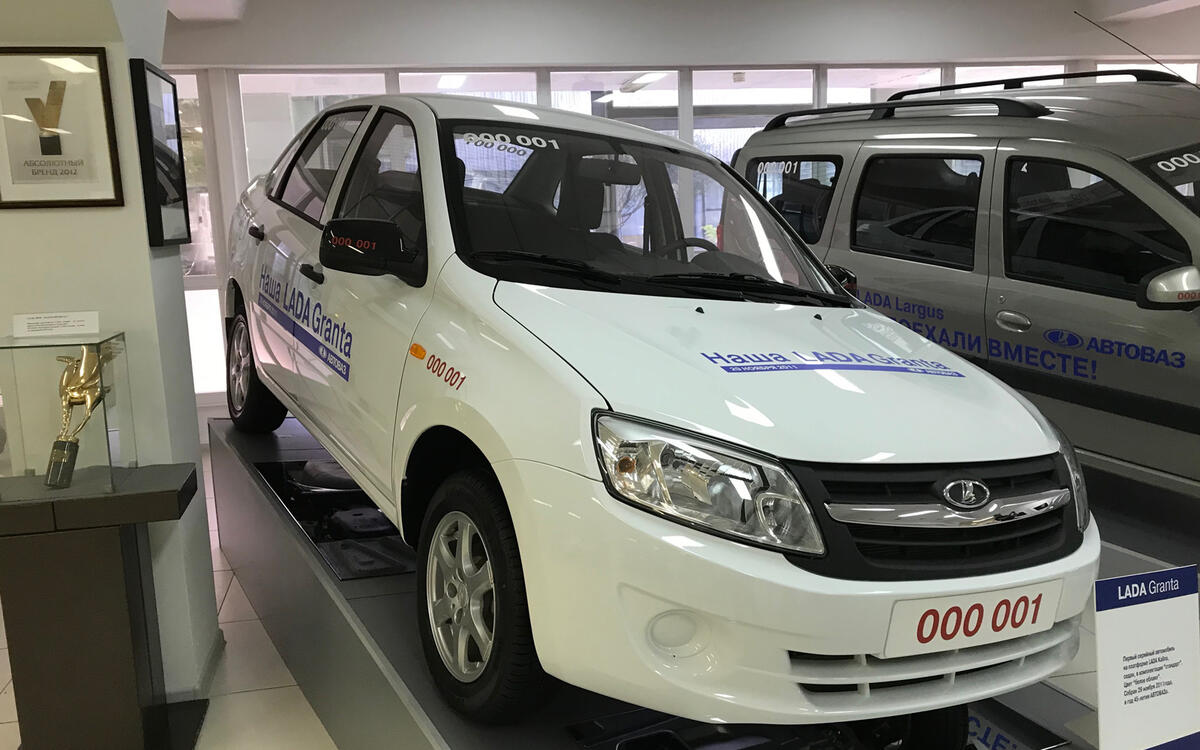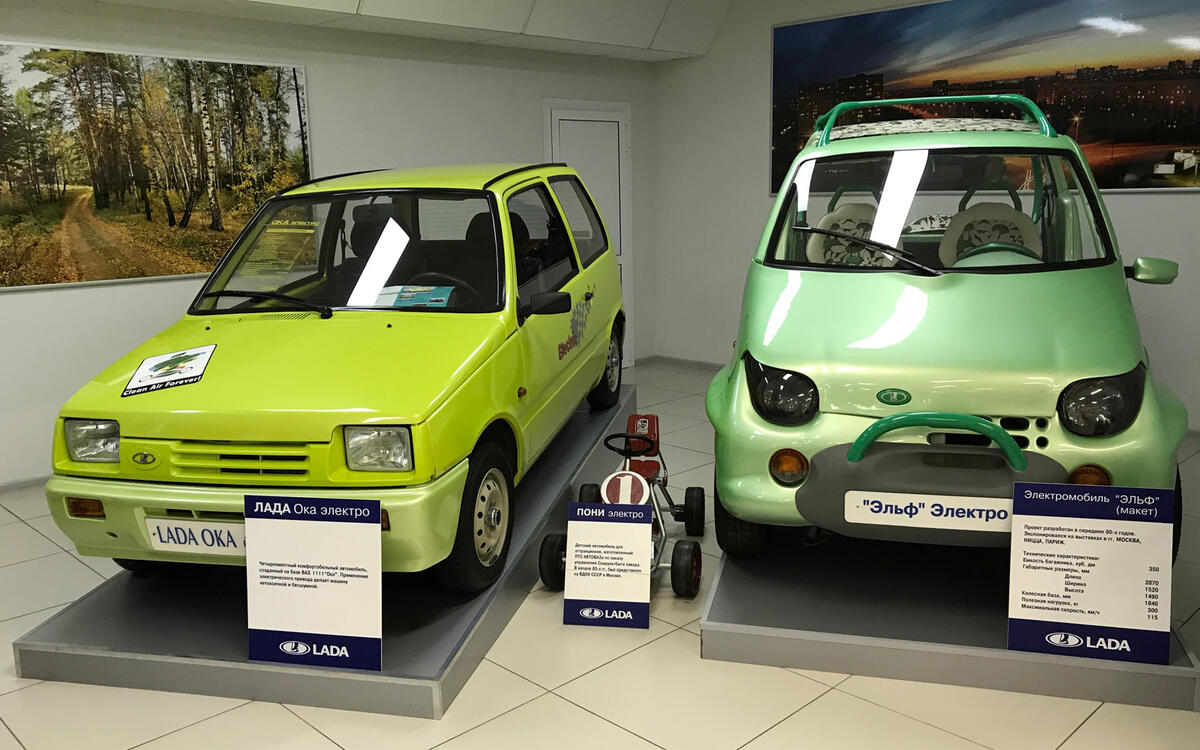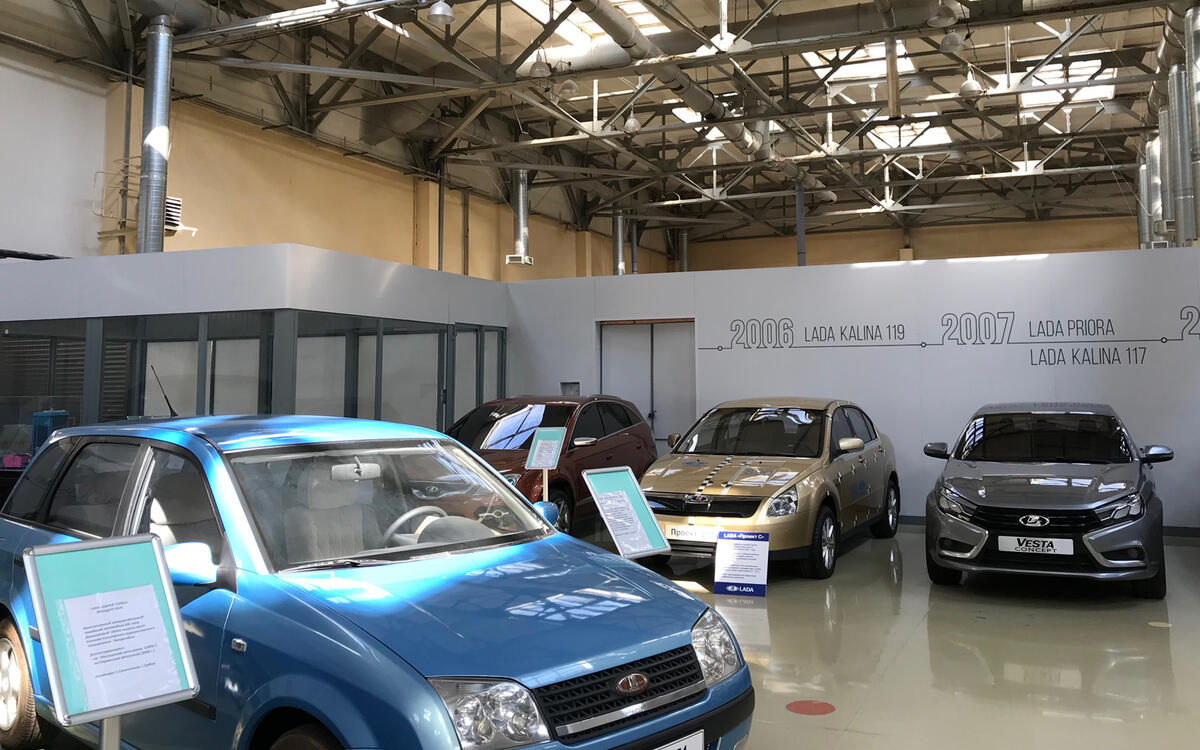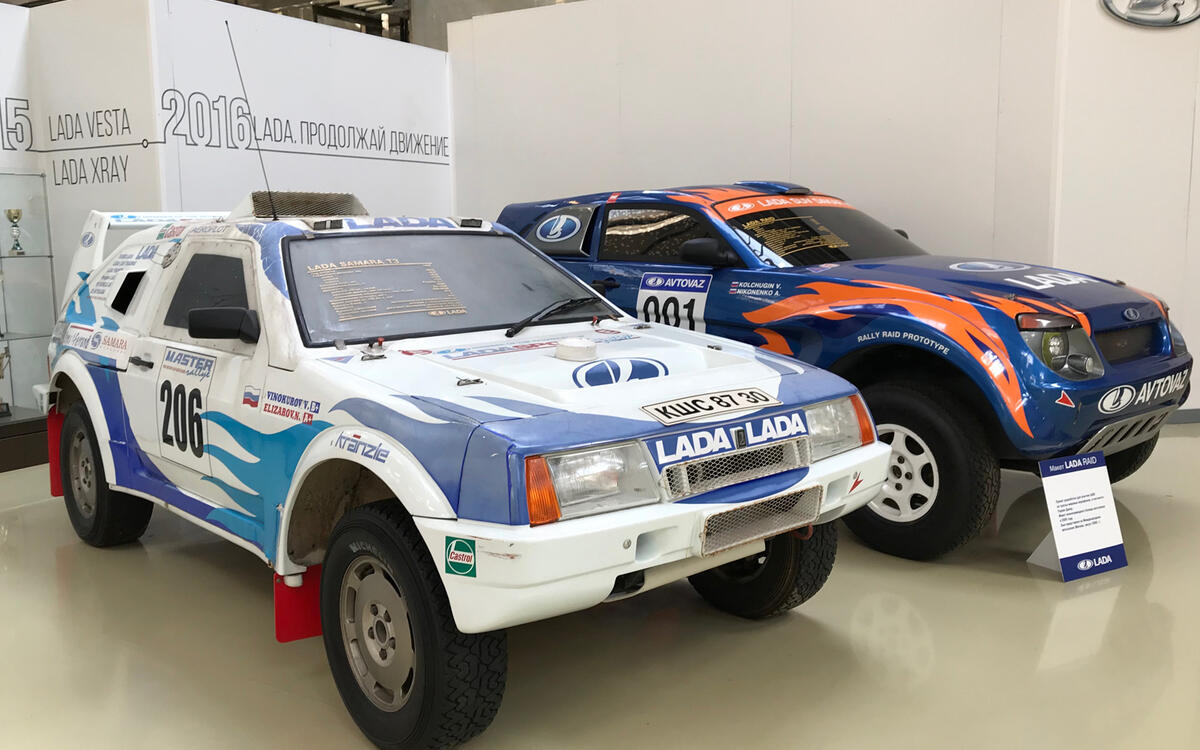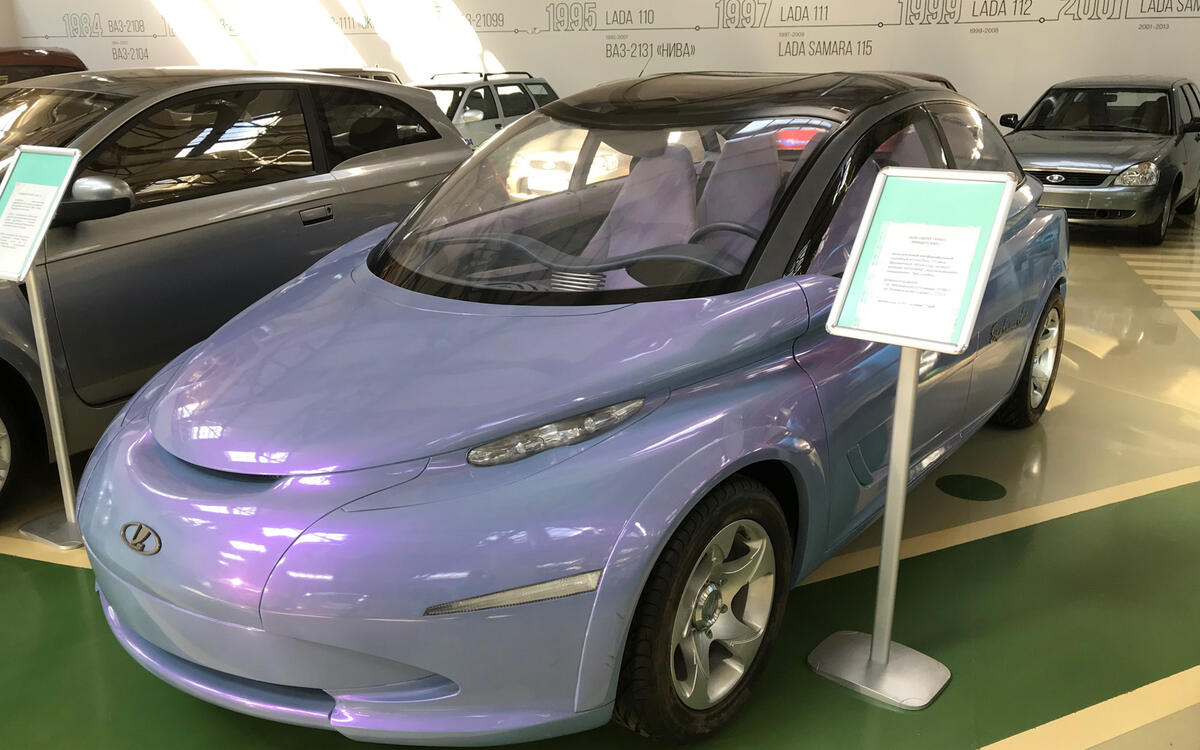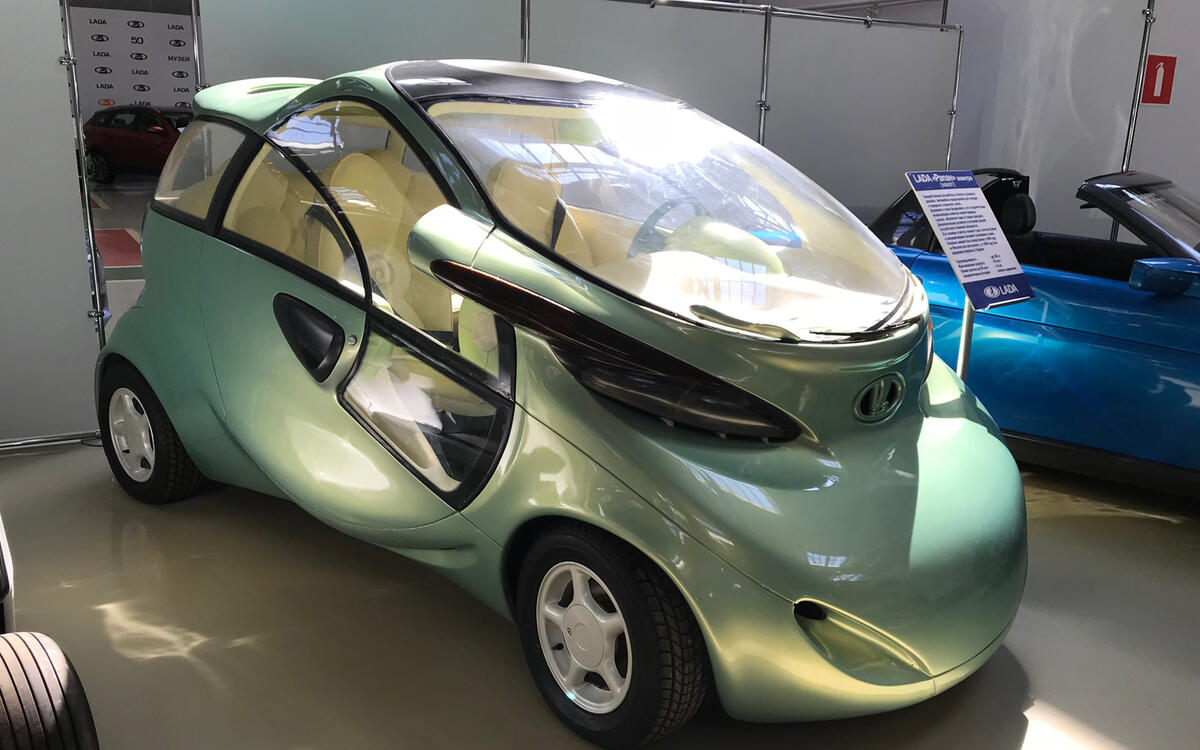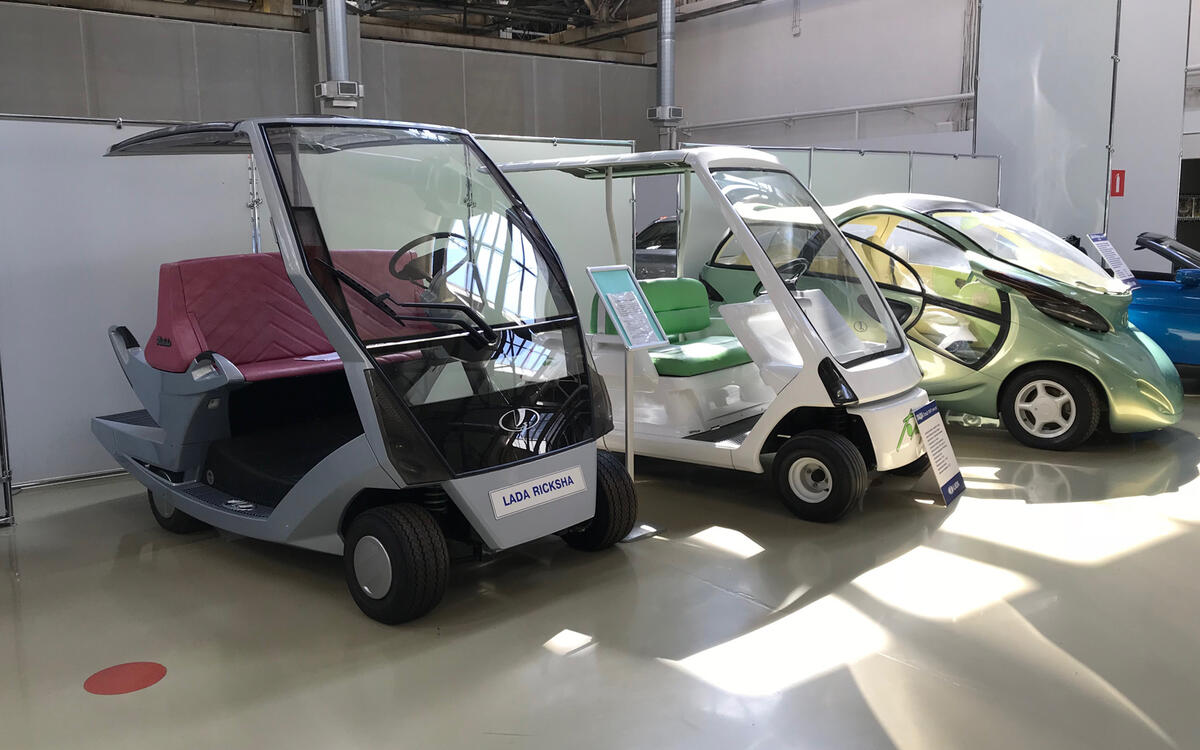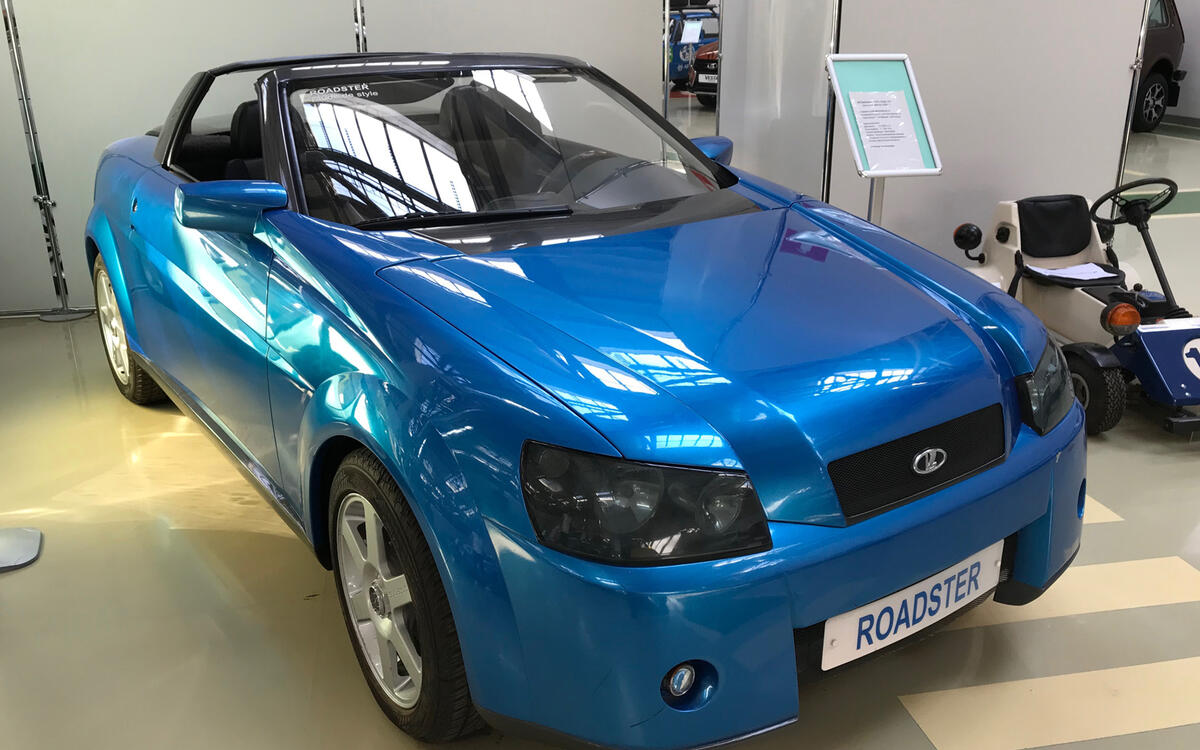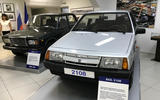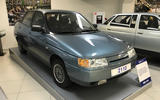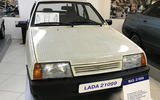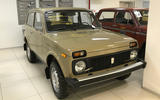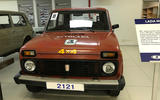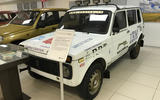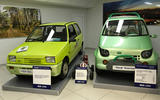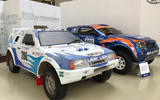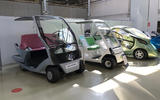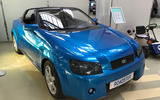 Slide of
Slide of
The Lada Museum
Fittingly, given Lada’s reputation for no-nonsense, low-cost cars, the Lada Museum is a pleasingly no-nonsense affair. It’s tucked away on the ground floor of the Avtovaz training college, located close to the entrance to the firm’s factory in Togliatti, Russia. The city was effectively created in the 1960s to house workers at the Avtovaz plant, and Lada’s presence is seen everywhere, from vast Lada statues on roundabouts to its sponsorship of the HC Lada Togliatti ice hockey team.
Yet the Lada Museum itself is a relatively small affair, with two rooms showcasing some of the most significant models and boldest concept produced by Avtovaz, Lada’s parent firm. Here are some of the highlights.
Oh, and if you’re planning a trip to Togliatti you’ll be pleased to not that, just like Lada's cars, the museum is excellent value for money: entry is free.
 Slide of
Slide of
Lada Vaz 2101 and Fiat 124
Avtovaz was originally founded in partnership with Fiat, with the firm’s early models reworked versions of Italian machines. The firm’s first car was the Vaz 2101 – branded a Zhiguli in Russia and a Lada for export markets – which went into production in 1970. It was a reworked version of the Italian firm’s 124, which was launched in 1966. Instead of hiding its parentage, the museum proudly displays the first Vaz-2101 that was delivered to a customer (left) next to a 124.
You’d be hard-pressed to spot the differences from the outside, but the Vaz-2101 was extensively reworked to ensure it could cope with Russia’s brutal winters. Aluminium drum brakes were fitted, the suspension was raised and extra steel was put in the body shell. There was also a new, Russian-built, 1.2-litre engine.
The machine was a hit in Russia, and was soon exported to other markets. It went on sale in the UK in 1974 (with engine options including a GM-built 1.7) with prices starting at £979. The Vaz-2101 was produced, with minimal alterations, until 1982.
 Slide of
Slide of
Lada Riva and Samara
The successor to the Vaz 2101, the Lada Riva - variously titled the Nova, Kalinka, Laika, Matriuska, Signet and Sputnet in different international markets – went into production in 1980, and was based on the underpinnings of the Vaz 2101. The Riva was offered in three basic forms: the Vaz 2105 saloon, Vaz 2104 estate and the luxury-spec Vaz 2107 (pictured left), complete with chrome grille. The Vaz 2107 was initially offered with 1.3 or 1.6 litre engines. The Riva was sold in the UK until tightening safety and emissions legislation led to its withdrawal, but stayed in production in Russia until 2012.
The Vaz 2108 (right) was another model with a host of names: it was called the Samara in Western Europe, Sputnik in Russia and a whole host of other names elsewhere. Introduced in 1984, it was designed to appeal to the mainstream European market and produced from 1984 until 2013.
 Slide of
Slide of
Lada 110
This company car was produced from 1995 until 2009, with aerodynamics developed with assistance from Porsche engineers. It was actually first shown in 1991, but an economic crisis delayed the start of production of the model, which features a 1.6-litre engine. This was another Lada to sport different named in various international countries, including the Aquarius in Venezuela. Estate (111) and hatchback (112) versions followed, with the model later modernised and renamed the Priora.
 Slide of
Slide of
Lada Samara 21099
The 21099 version of the Samara was launched in 1989, with a new bonnet and grille, along with several interior improvements. It was intended as a more premium offering. This version in the museum is covered with the names of the staff at the Togliatti factory involved in producing it.
 Slide of
Slide of
Lada Niva
Perhaps the most famous Lada of them all – and certainly the most venerated – the Niva was launched in 1977 and is still produced, virtually unaltered, today. Designed as a high capability vehicle for rural Russia, it’s a pioneering yet low-cost off-roader, with unibody architecture and independent front suspension. While it was the first Avtovaz model not based on a Fiat and featured the firm’s own four-wheel-drive system, it did take many mechanicals from earlier Fiat 124 an 125-derived Lada models.
The Niva was sold in the UK, with versions variously labelled the Cossack and Hussar. Unusually, the model is no longer officially known as the Niva: the nameplate was sold to GM as part of a joint venture deal to produce the Chevrolet Niva, which is now the firm’s only Russian model. The Lada Niva is now officially titled the 4x4.
 Slide of
Slide of
Soviet Arctic Expedition Lada Niva
The Niva is tough: properly tough. According to the firm Niva/4x4 cars have been to the North Pole at least three times, and used in expeditions to Everest and other mountain regions. This particular car was used by the Soviet Antarctic Expedition, and Lada reckons it spent more than a decade battling the continent’s cold weather. Thankfully, Lada developed the model to be easy for home mechanics to maintain: the firm doesn’t have a strong dealer network on Antarctica…
 Slide of
Slide of
Lada Niva 2131
The original Niva – with the Russian industry development code Vaz 2121 – was a three-door model. In 1995 it was followed by a lengthened five-door variant, the Vaz 2131. While the increased wheelbase and extra weight meant many didn’t regard it as good at off-road driving, it was still tough: this model was used for a 1999 expedition in the Himalayas, reaching a world record 5726 metres above sea level.
 Slide of
Slide of
Lada Kalina
The Kalina supermini was launched in 2004, although the first planning for the model began in the early 1990s. It’s offered in saloon, hatchback and estate forms, and was used as the ‘reasonably priced car’ in the short-lived Top Gear Russia TV programme. The Kalina name comes, rather randomly, from the Russian name of a type of flower, but wasn’t used in Finland because it translated to ‘rattle’. As a result, it was marketed there as the somewhat less imaginative 119.
 Slide of
Slide of
Lada Kalina Sport
The first generation Kalina Sport was produced from 2008 until 2013, and was one of the first Sport-branded Lada models. It used a tweaked version of the Kalina’s 1.6-litre engine. Lada actually showed a concept car of a Kalina Sport Super 1600 rally car, although it never made it to competition.
 Slide of
Slide of
Lada Granta
The Granta was launched in 2011, and was an early result of Avtovaz’s tie-up with Renault (the French firm now has a controlling stake in Avtovaz). It was based on the Kalina platform, and has rapidly grown to become Lada’s best-seller – and battles with the Kia Rio to top Russian sales charts. It was designed to meet Russia’s preference for small cars with saloon bodies. This particular car, as the number plate suggests, was the first to roll out of the factory.
 Slide of
Slide of
Lada Oka Electric and Lada Elf Electro
Yes, there really have been electric Ladas. The Oka (left) was a city car developed in 1988, and most examples were powered by a 650cc two-cylinder engine. Avtovaz first showed a battery electric version the following year, and the EV version was produced in very limited numbers until 1998. It featured 120V of batteries in the front and back of the car, giving a range of around 60 miles. Randomly, in recent years a Las Vegas-based firm called Oka Auto USA has offered models that meet US rules for Neighbourhood Electric Vehicles, with a limited top speed of 25mph.
The Lada Elf concept was (right) was developed in the mid-1990s, and featured the same drive system as the Oka Electric, with a limited top speed of 56mph. Its styling was inspired by beach buggy designs. Because who doesn’t need an electric Lada to drive to the beach in on a sunny day?
Tucked in between those two cars is a real EV oddity: the Lada Pony electro, which was built for use on an amusement park ride in 1983.
 Slide of
Slide of
Lada Classic concept
The second hall at the Lada Museum is dedicated to the firm’s currentl line-up, concept cars and motorsport projects. The Vaz 2151 (foreground) was revealed at the Moscow motor show in 2002, and was designed to showcase a replacement for the Riva. The example shown in the museum is the estate version The Classic didn’t get made in this form, with the Riva eventually replaced by the Granta.
 Slide of
Slide of
Lada Granta Sport WTCC
After a factory-blessed entry by the Russian Bears Motorsport squad, Lada had its first works foray into the World Touring Car Championship (WTCC) in 2009, initially running 110s before introducing the Priora mid-season. In 2012 the firm returned with the new Granta WTCC, built to Super 2000 touring car regulations. Briton James Thompson drove the car in selected events that year, and headed a two-car team in 2013.
The following season the WTCC switched to new TC1 regulations, and Lada ran a modified version of the Granta Sport, with Thompson and Mikhail Kozlovskiy joined in the team by Briton Rob Huff. The car showed decent form, and Huff – pictured with the car in cardboard cut-out form – claimed Lada’s first two WTCC victories with wins in Beijing and Macau.
 Slide of
Slide of
Lada Samara Sport T3
Given’s Lada’s prowess at producing off-roaders, it’s not surprising many of the firm’s motorsport activities have been on rally raid events such as the Dakar Rally. The Samara Sport T3 finished seventh in the 1990 Paris-Dakar Rally and fifth a year later, with Jacky Ickx driving on both occasions. However, the machine didn’t actually contain that many Lada parts: it featured a Porsche 959 four-wheel-drive system and flat-six engine.
 Slide of
Slide of
Lada Raid
This concept was presented at the Moscow motor show in 2006 – the 30th anniversary of the Niva going into production – and was built as part of a Lada plan to participate in the 2008 Dakar Rally. It featured a Porsche-derived 3.8-litre engine with a six-speed sequential gearbox. The front headlights were round to mimic the 1976 Niva, and features ‘eyebrow’ designs above them in a nod to the original Niva design. The Dakar plan never came to fruition, and this is the only Raid that was built.
 Slide of
Slide of
Lada Niva Sport T3
The Niva T3 was built for the Paris-Moscow-Beijing marathon raid event, and claimed its first victory in the Magyar Mavad Raid-4 in Hungary in 1991. This particularly model was used on the 1995 Master Rally, which ran from Paris to Beijing, via Moscow and Ulaanbaaatar. Alexander Lakeyev and Valeriy Kolchugin finished tenth overall.
 Slide of
Slide of
Lada Peter Turbo
This bubble car-esque oddity is a 2000 concept developed by Avtovaz to showcase a large car with a design focus on aerodynamic efficiency. We’re not entirely sure why they chose the odd colour, or exactly who Peter Turbo is. It was shown at the Paris motor show but only in model form – even the doors were painted on.
 Slide of
Slide of
Lada Rapan
Let’s face it, when Lada’s designers decided to go ‘out there’ with concept cars, they did so with commitment. The Rapan is an electric concept that was produced in 1998, apparently partly in a bid to spark interest in developing EV infrastructure in Russia (which didn’t seem to work very well). The unusual design featured all the controls within the steering wheel and an extra-large front window. Another notable feature were extra windows built into the bottom part of the doors to aid parking - a feature most recently seen as an option on the McLaren Senna…
 Slide of
Slide of
Lada Ricksha
Lada has made a number of golf cart concepts through the years, with this electric example dating from 2002. It was front-wheel drive and featured underfloor batteries that helped lower the centre of gravity, and a removable canopy. Just behind the Ricksha is its predecessor, the Lada Golf in roofed Vaz 1004T version from 2001.
 Slide of
Slide of
Lada Roadster Concept
This 2000 concept was designed to show Lada’s sporting side, and was an imagination of what a two-seater Kalina with a removable hard-top roof could look like. To make the concept various bits were ‘borrowed’ from elsewhere in the Lada range. Unusually, the removable top was designed to be placed on top of the trunk, rather than folding inside the car. It featured a two-litre 16-valve engine, and was capable of 0-62mph in around nine seconds.
 Slide of
Slide of
Lada Revolution 3
This is what happens when Lada makes a sports car. The first Lada Revolution, an open-top sports prototype, was developed in 2003 and followed two years later by a reworked version labelled the Revolution 2. In 2008 Lada followed that with this Revolution 3, a two-seater roadster powered by a 2.0-litre turbocharged engine producing 242bhp and 229lb ft at 5500rpm. Combined with a lightweight design – the exterior panels were made of plastic – that gave it a 0-62mph time of 5.9secs. It was even tested on the Nuburgring Nordschleife.
Highly capable off-roaders, electric city cars, two-seat roadsters and even golf carts: Lada has done a lot more than just make rubbish cars...
Advertisement


